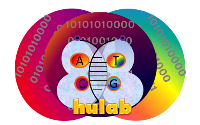Epigenetics and Disease

DNA mutations that form during mitosis generally cause the cell to malfunction, ultimately leading to apoptosis which is the process where a cell is dismantled (black cell). Sometimes these mutations can lead to the activation of oncogenes. These newly activated genes have the potential to form a tumor (red cells).
Genetic and Epigenetic Disorders:
Genetic disorders are abnormalities that can be found in a person's DNA sequencing. These mutations can alter the coding for vital molecules thus changing their structure and functionality. Epigenetic disorders arise from aberrant epigenetic marks and can be important biomarkers for cancer, imprinting, autoimmune, and neuropsychiatric disorders.
Imprinting Disorders:
Although genomic imprinting is a vital cellular process, certain disorders can arise from these imprinted genes. Angelman and Prader–Willi syndrome are both examples of an imprinting disorder that result in the expression of mutated genes on chromosome 15. Prader-Willi syndrome develops your father's genome while Angelman syndrome your mother's genome.
Cancer:
Cancer is the second highest cause of death in the world with approximately 550,000 deaths annually in the United States alone. Although some forms of cancer are thought to be hereditary, most form from environmental factors.
Cancer has been linked with many genetic and epigenetic abnormalities such as chromosomal instability, activation of oncogenes, silencing of tumor suppressing genes, and inactivation of DNA repair mechanisms.
DNA methylation has been thought to be a major driving force behind a cancer cell’s proliferation. DNA methylation patterns change during tumorgenesis and have been linked to the silencing of serveral tumor suppressing genes. Some of these patters include DNA hypermethylation of CpG islands and hypomethylation of non-CpG islands. [2]
Many studies have shown that miRNA places a crucial role in gene regulation. The function of a cell can change drastically if miRNA becomes deregulated. miRNA molecules have been identified as potential clinical markers for pituitary tumorgenesis. One biological study found that miR-26b and miR-128 have the potential to activate the PTEN-AKT pathway. Significant changes in its expression have been linked to various cancer types because PTEN is a tumor suppressing gene. [3]
Cancer has been linked with many genetic and epigenetic abnormalities such as chromosomal instability, activation of oncogenes, silencing of tumor suppressing genes, and inactivation of DNA repair mechanisms.
DNA methylation has been thought to be a major driving force behind a cancer cell’s proliferation. DNA methylation patterns change during tumorgenesis and have been linked to the silencing of serveral tumor suppressing genes. Some of these patters include DNA hypermethylation of CpG islands and hypomethylation of non-CpG islands. [2]
Many studies have shown that miRNA places a crucial role in gene regulation. The function of a cell can change drastically if miRNA becomes deregulated. miRNA molecules have been identified as potential clinical markers for pituitary tumorgenesis. One biological study found that miR-26b and miR-128 have the potential to activate the PTEN-AKT pathway. Significant changes in its expression have been linked to various cancer types because PTEN is a tumor suppressing gene. [3]
Resources:

